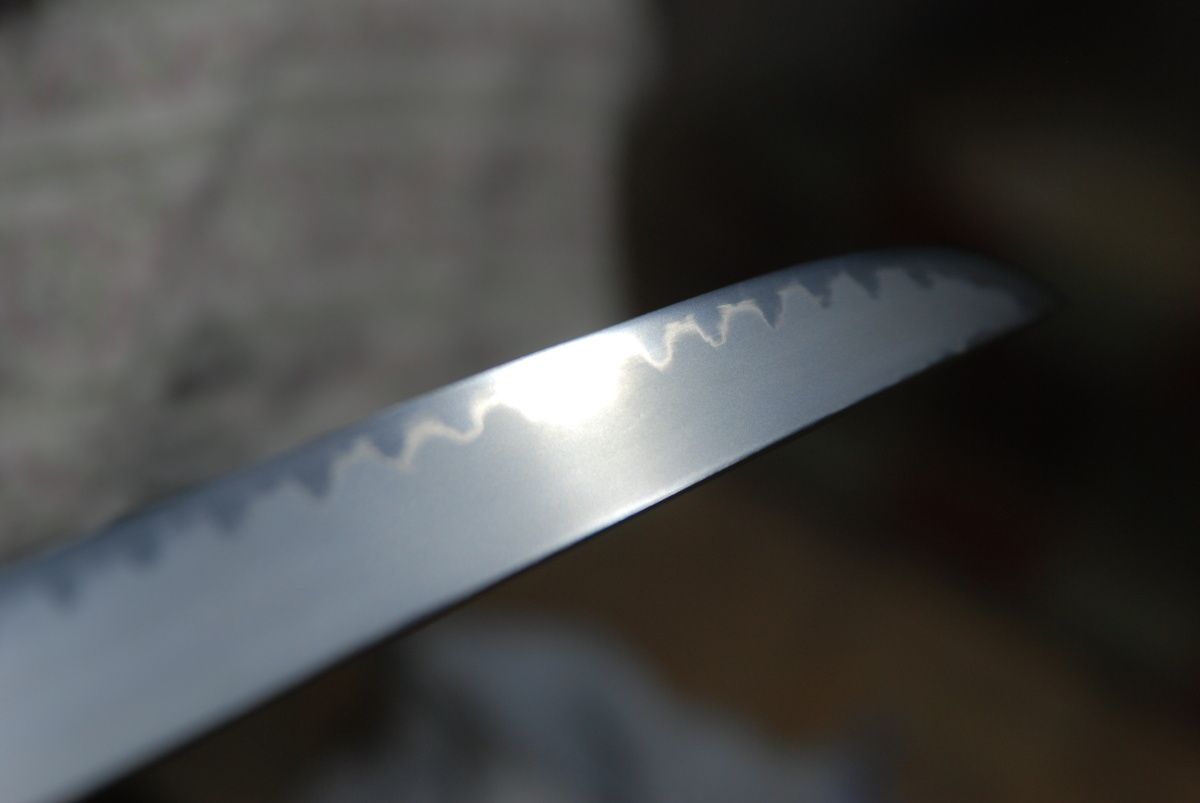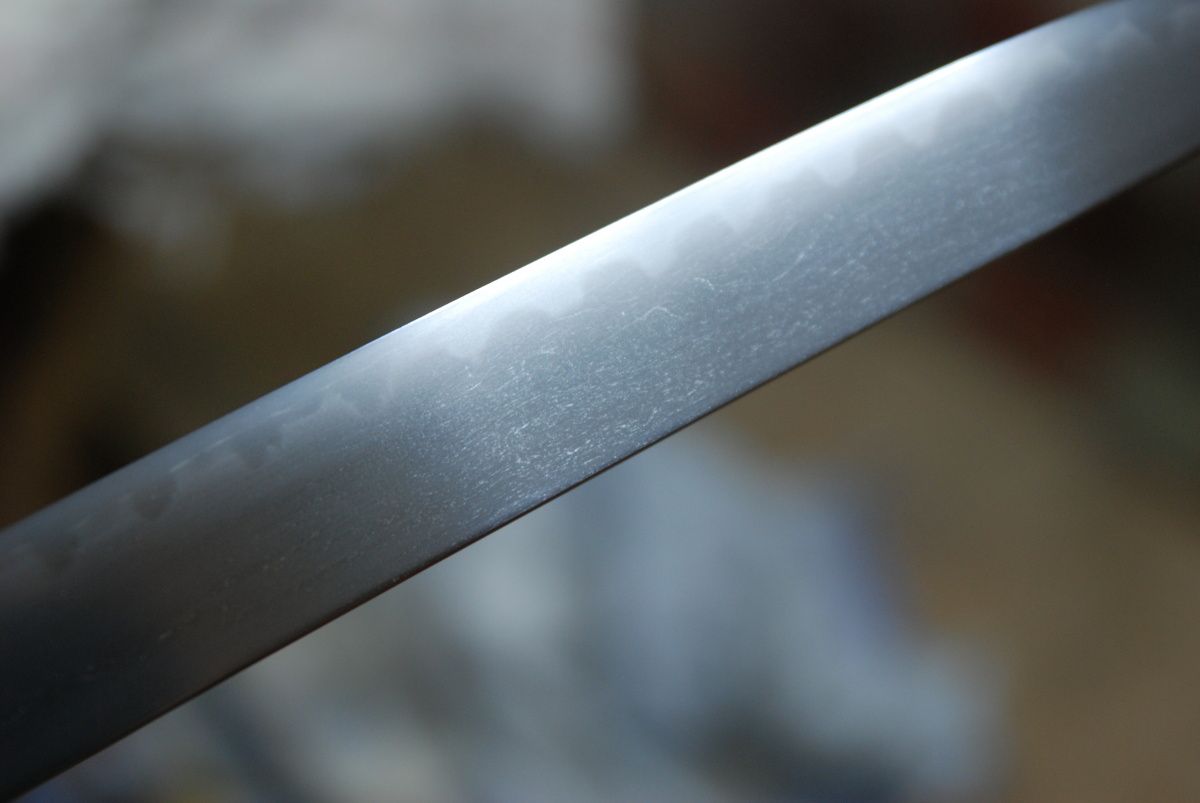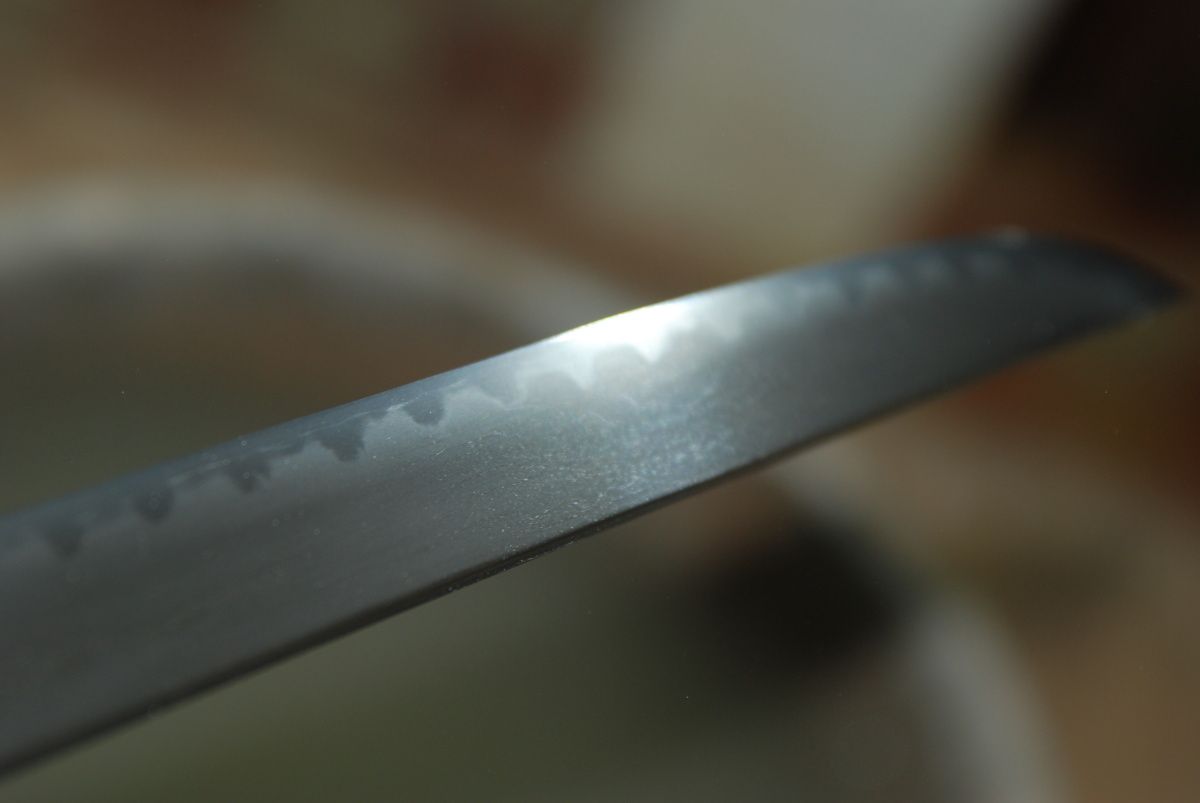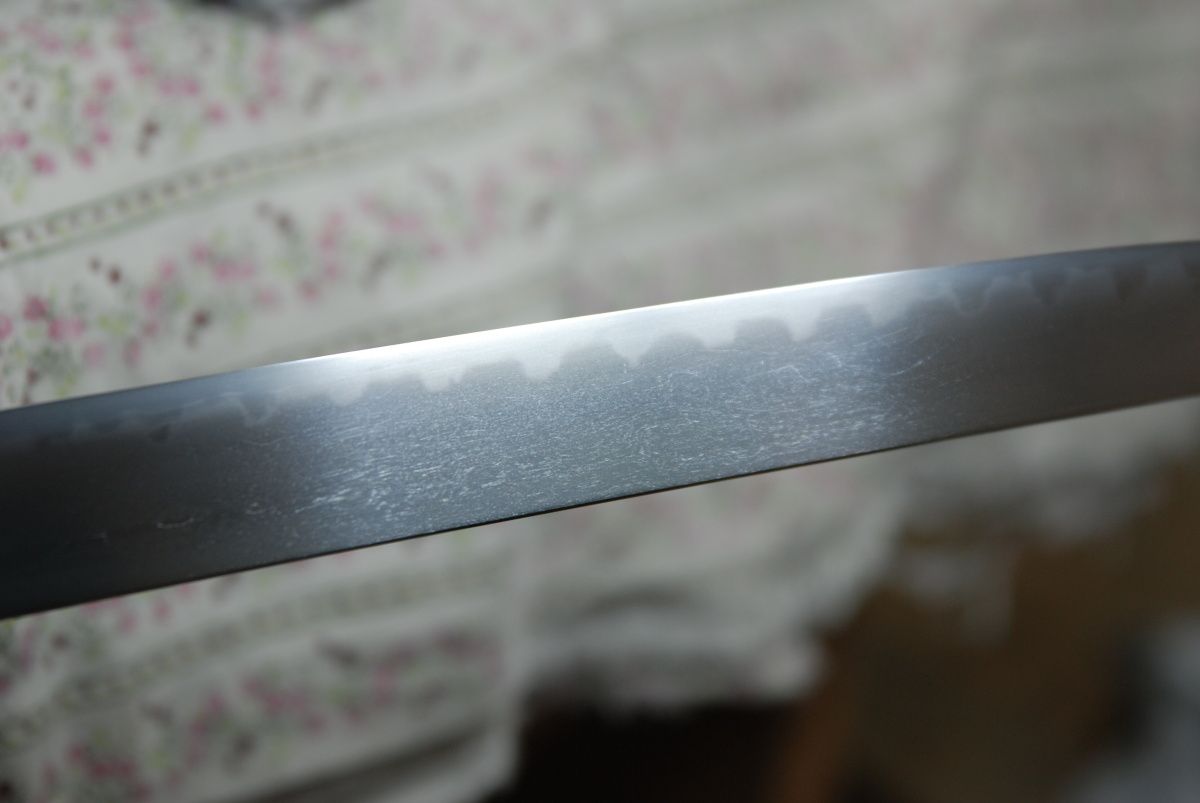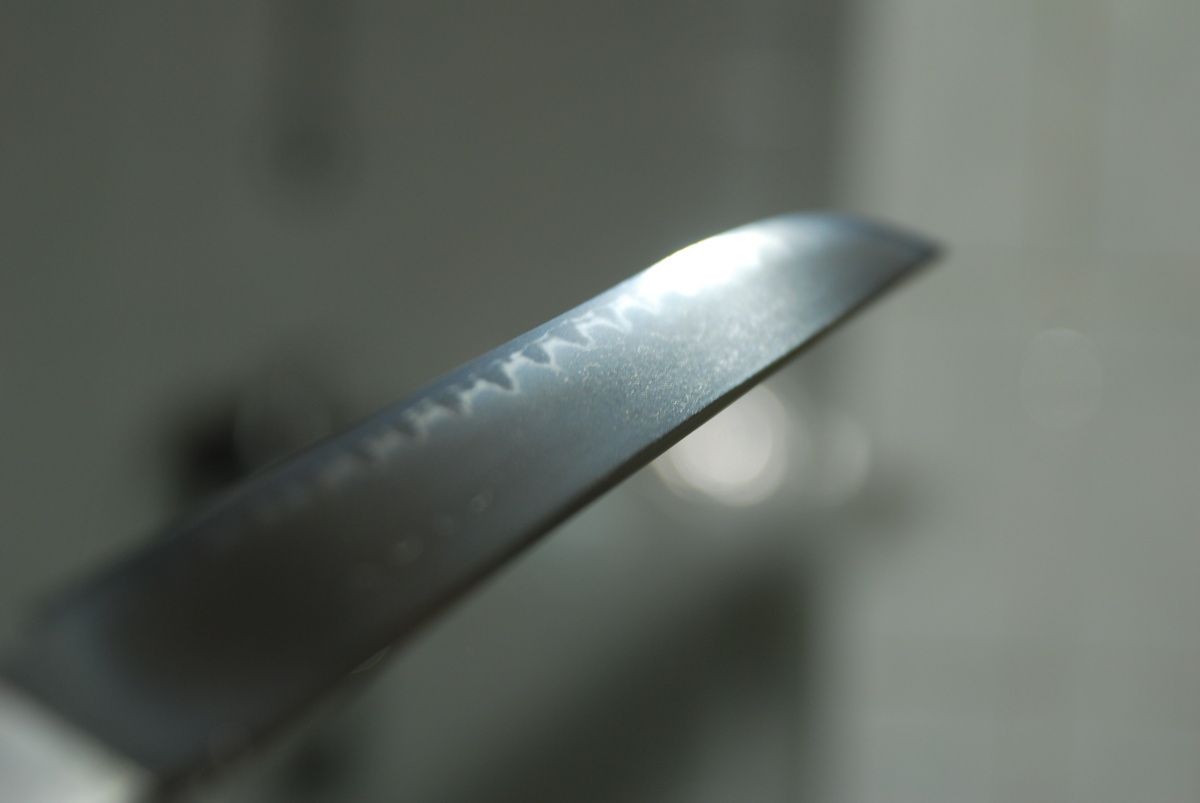Jitekko
Pavel Bolf
Polishing, adjusting the final appearance of the structure and steel particles of Japanese sword blades
The polishing of Japanese sword blades consists of three parts. The first is shaping the blade on arato, binsui, kaisei stones. The purpose of this phase is to achieve perfect shape, sharp facets and the correct shape of the surfaces below and above the shinogi rib, spine and tip. The first three stones are distinguished by their ability to take more steel from the blade being worked.
The second phase is the polishing of the blade on the chu-nagura, koma-nagura, uchigumori and hazuya and jizuya finger stones. These stones already have little ability to remove larger amounts of steel, but they do soften the surface of the steel, gradually revealing its folded structure and the crystalline structures formed during the hardening process.
The hazuya finger stones are thin segments of the uchigumori stone. They may be paper-backed (washi) by applying thumb pressure and strokes parallel to the longitudinal axis of the blade, they unify the quality of the polished surface. The choice of the appropriate stone type whitens the hamon line and brings out the texture of the steel. After the use of the hazuya stone, the surface of the steel is milky.
The jizuya finger stone removes the milky discoloration of the steel , brightens the steel and greatly enhances the individual steel particles. It has the ability to "open up" the structure of the steel being reloaded. As with all polishing stones, the second stage of polishing depends on the characteristics of the steel of the particular blade. Sometimes it is enough to work with finger stones only briefly and the structure of the steel is clearly visible. Sometimes highlighting hada (the structure of the overlay) and hataraki (the metallurgical activity) is a matter of several hours of work.
The final step to finish the surface of the steel is to use jitekko paste or nugui. These pastes are composed of oil and iron oxides. Some nugui are composed of multiple items. Polishers also mix their own nugui and often keep their recipes secret. For example, you can buy a jitekko and three types of nugui at a polishing store. Jitekko brings out the subtle texture of the overlay and steel particles. It does not significantly affect the colour of the steel. It is used for traditional sashikomi style polishing. It is said to show the true beauty and quality of the steel. The result of working with nugui is not as challenging as after using nugui. The contrasts of the metallurgical effects and hada are more subtle. When jitekko is applied for a long time, the texture of the steel being reloaded is "hollowed out", creating an aged hada effect. It is up to the taste of each polisher how distinctive hada is. In any case, the application of jitekko can change the resulting face of the steel very significantly. To increase the effect of working with jitekko, the blade is heated before its application by using a cotton swab with which to spread the paste under pressure in simultaneous strokes. It is heated by pouring hot water over it.
The basic is Kongo (iron oxide and oil) In their application, the result is different. Some highlight more hada (joints between steel particles, layers), some more the color differences of the steel particles depending on the carbon content. (light, dark). Again, very much depends on the type of nougat and length of application. And of course the quality and type of steel. For swords with a snake formed by combining steels (Soshu, Gassan) the result of highlighting the color differences of the steel particles is of course faster and more pronounced than for blades with a single type, semi-fine structure.
The preparation of the steel with stones prior to the actual application of the paste is of course also essential for the final form of the blade. However, the method and duration of paste application has the ability to quite radically affect the final form of the blade. A blade which, after a short application of paste, exhibits a hada like appearance as nashi ji or ko itame may, after repeated and longer applications, appear as mokume, o-mokume, itame, etc. I usually use a mix of jitekko and kongo paste, and then another nugui from the Namikawa heibei store to bring out the color particles. Longer application can affect the contrast of the utsuri line. This sometimes only comes out significantly after longer and repeated applications of the paste. This also applies to chikei effects.
In the photos I tried to capture the changes after repeated application of the paste. (mix nugui, jitekko) Each application lasted about 5 min. Before application, the blade is after applying hazuya stone (without jizuya). Hada is closed, not very clear. The surface of the steel is milky colored. Each successive application more accentuates the structure of the folding. In the last application, the color differences of the individual steel particles and some chikei also stand out.
